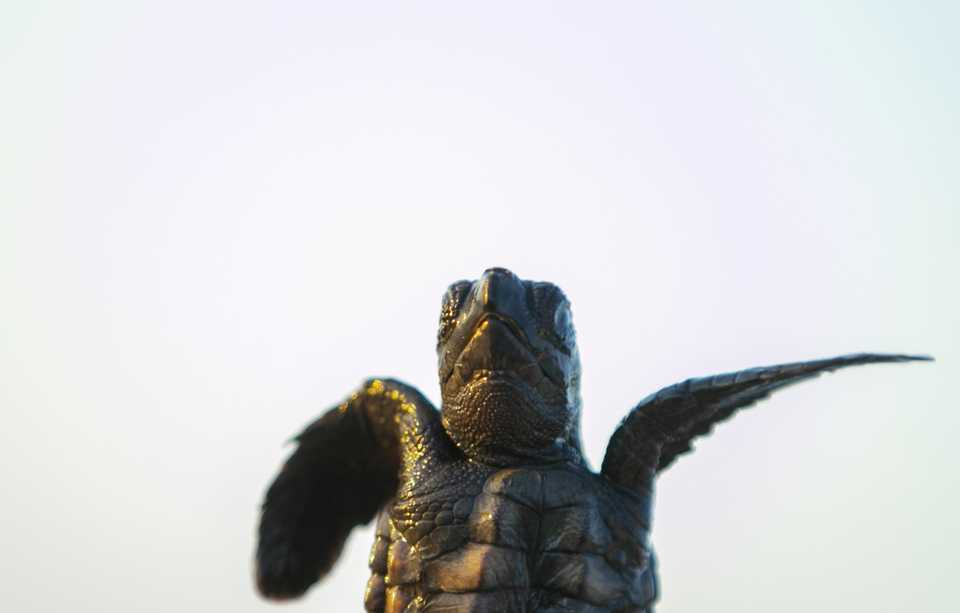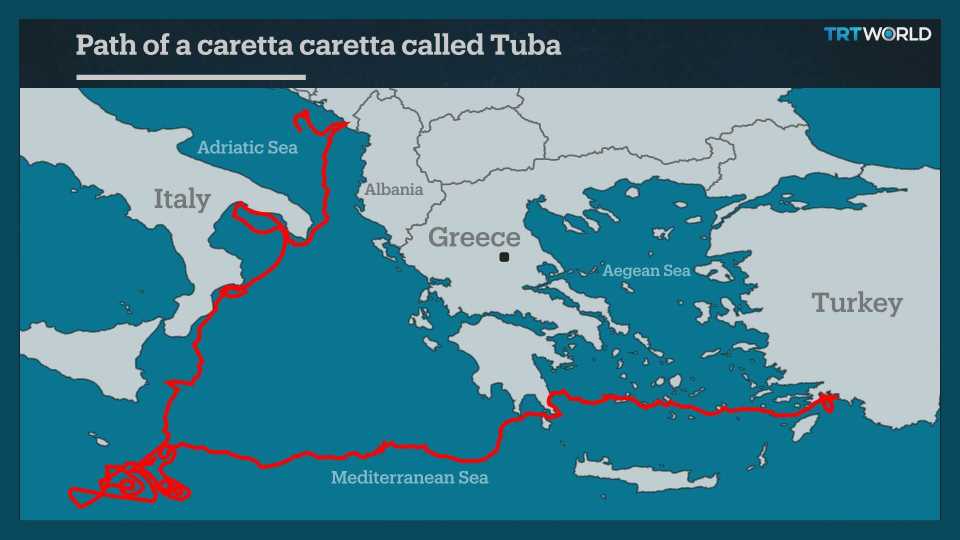Caretta caretta sea turtles, also known as loggerhead sea turtles, are an endangered species of oceanic turtle that lives throughout the world. The southern beaches of Turkey are a known nesting area for the species which lays its eggs on beaches on the west Mediterranean coast of the country.
Talking to TRT World, Ecological Research Association (EKAD) President and Hacettepe University biology instructor Ali Fuat Canbolat says the turtles lay eggs every three to four years.
“While caretta caretta don’t lay eggs every year, when they do, they may nest three to four times a season, with 12-14 day gaps in between,” he points out.
Canbolat adds that the turtles prefer the temperate waters of the Mediterranean and can be seen laying eggs from Dalyan to Fethiye, Patara, Kale, Kumluca, Olympos, Cirali, Belek, and further north.
In Antalya’s Belek district, EKAD has recently observed a nesting caretta caretta that was tagged 21 years ago with the marker “TR-A 0060”. According to Canbolat, the turtle “is probably over 40 years old.”
Canbolat says the turtle most probably had come to lay eggs in Belek in the years before but because the beach is 30 kilometres long, EKAD members don’t always get to witness every single sea turtle that swims ashore to lay eggs in the sand.
Hatchlings, according to the EKAD website, “leave the nest in 5 days on average by helping each other to scramble up in the sand.” Because they orient themselves towards the sea “by making use of the brightness of the horizon and the reflection of the moon on the water’s surface” artificial lights are very dangerous to the hatchlings and may disorient them and ultimately cause their deaths.
The caretta caretta is a migratory sea turtle and spends the winter not only in the colder Aegean and even the inner Marmara Sea, but also in the Adriatic Sea, North Africa, and Greece, Canbolat explains.
Caretta caretta lay eggs on the beach they were born in, using magnetic fields to determine their destinations. They are carnivorous and swim about 200 metres deep in the sea.
While caretta caretta do not have teeth they have very strong jaws. According to National Geographic, which calls them a “keystone species,” other animals in its ecosystem depend on them for survival.
National Geographic notes that “These turtles feed on invertebrates, whose shells pass through their digestive systems and, upon excretion, fall back to the bottom of the ocean for other animals to eat as a calcium source. Predators also rely on loggerhead hatchlings for food, while more than a hundred species of animals—including barnacles, crabs, and algae—live on their shells.”
Caretta caretta can live to be as old as 100 years. Yet estimates suggest only one out of 1,000 hatchlings survives to become an adult.

Mapping a caretta caretta’s path
A caretta caretta named Tuba was equipped with a GPS transmitter and released into the sea in August 2019 by DEKAMER (Sea Turtle Research Rescue and Rehabilitation Centre). This was thanks to a project by the Ministry of Environment and Urban Planning General’s Directorate for Protection of Natural Assets; the GPS tracker was bought with the support of TUI Care Foundation.
According to DEKAMER, “Tuba is a 25 year old female loggerhead turtle who was recently rescued from the sea after seriously injuring her shell.”

DEKAMER Scientific Coordinator, Dogan Sozbilen, tells Anadolu Agency that “The sea turtle has travelled more than five thousand kilometres [between August 29, 2019 and July 7, 2020]. First she hung around Marmaris for two months, then moved on to Greece and the Balkans the following month. She spent the entire year in Malta’s seas, and with the summer moved to Italy. After staying in the Adriatic Sea for a month and a half, Tuba made her way to Albania.”
Sozbilen says Tuba is unusual in that “In previous years, other sea turtles from Turkey would go to Northern Africa and turtles from Greece would go to the Adriatic for the winter. This is the first time we have seen an animal originating from Turkey go there.”










Discussion about this post